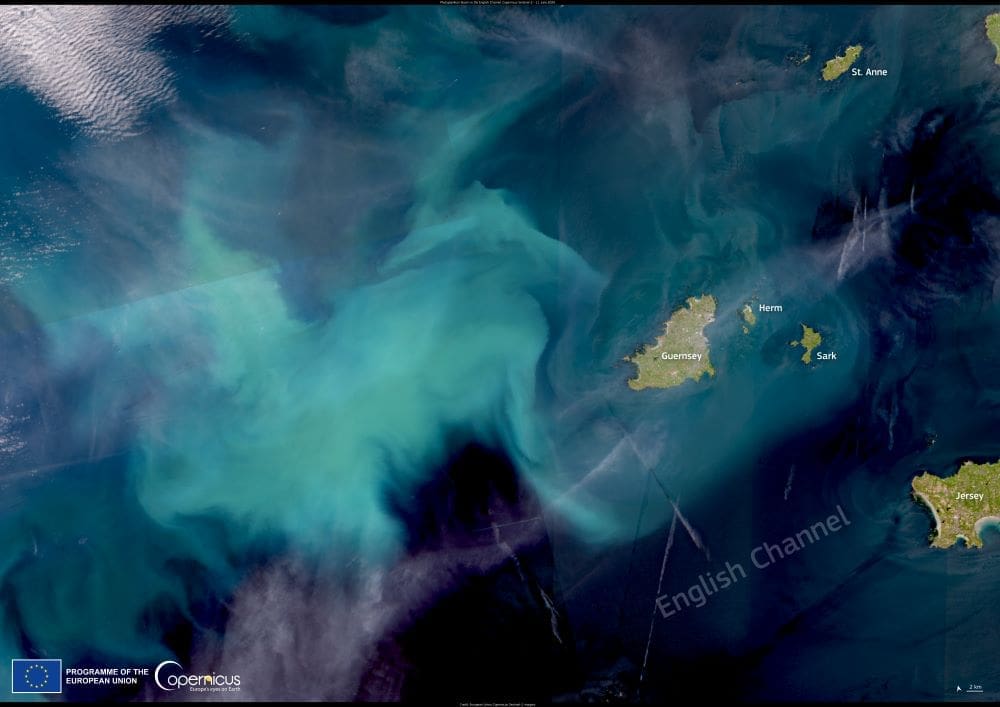Each spring, the English Channel comes alive with color as phytoplankton blooms flourish across its nutrient-rich waters. This seasonal surge is visible in this image, captured by a Copernicus Sentinel-2 satellite on 11 June 2025, showing a swirling bloom near the island of Guernsey. The patterns are driven by strong tidal currents and vertical mixing that bring nutrients to the surface, feeding vast communities of microscopic algae.

Phytoplankton form the foundation of marine food webs and are a key component in regulating the planet’s carbon and oxygen cycles. In the Channel, increasing daylight and warming surface waters in spring combine with terrestrial runoff and wind-induced mixing, creating ideal conditions for these blooms to develop. The resulting concentrations of chlorophyll, a pigment used in photosynthesis, can be detected from space, offering a vivid look at ocean productivity.
The image was acquired by one of the Copernicus Sentinel-2 satellites, which monitor coastal and oceanic conditions across Europe and beyond. These data, together with services like the Copernicus Marine Service, are essential for tracking the health of marine ecosystems and assessing how climate change may be shifting biological and chemical patterns in the ocean. Tools offered through the Green Ocean information portal support users in monitoring phytoplankton activity and broader ocean health trends.
Featured image credit: European Union, Copernicus Sentinel-2 imagery



